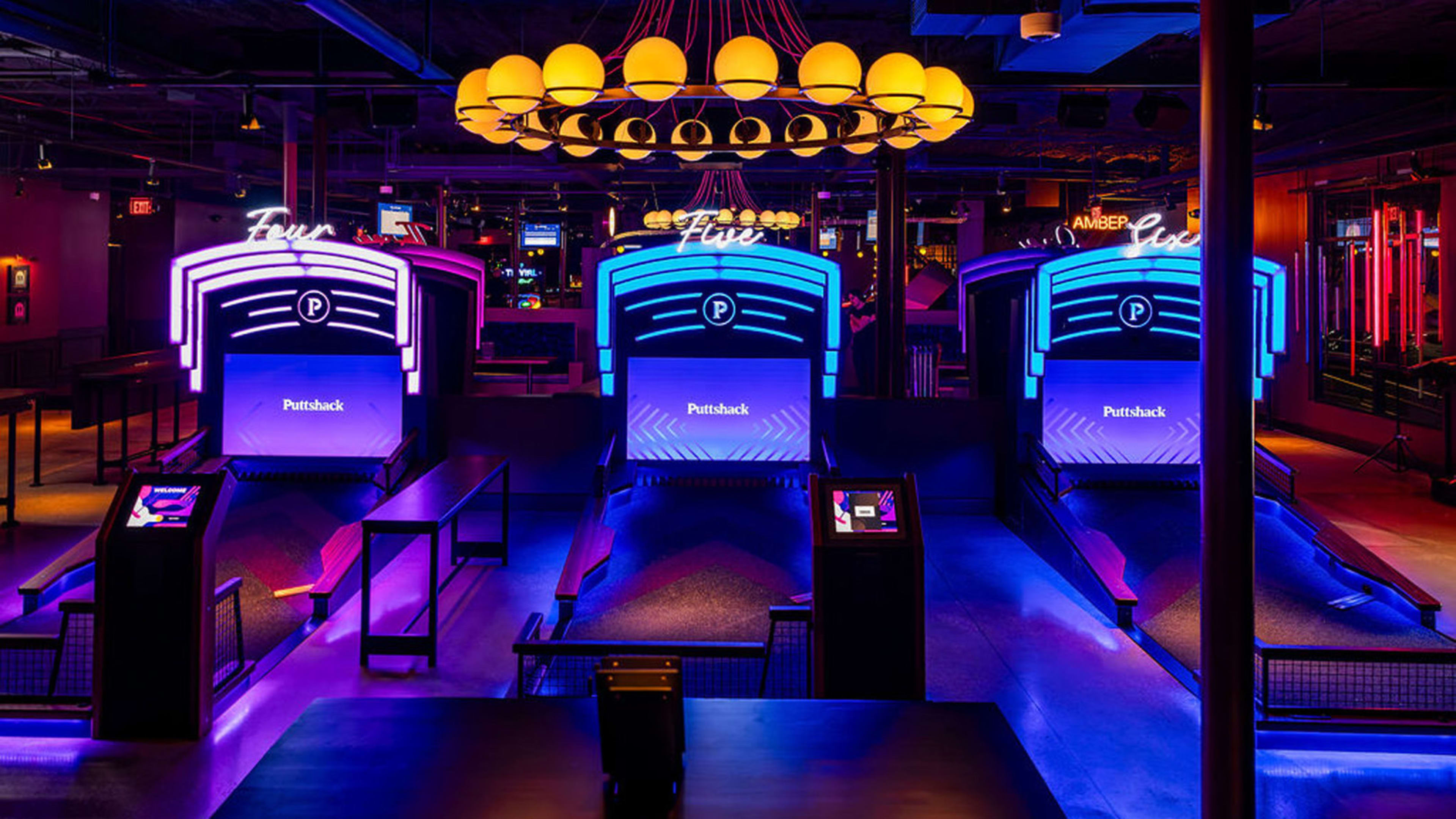Mixing funky indoors mini golf with food and booze has been a winning formula for Puttshack since it was founded in 2018 by former Topgolf founders Steven and Dave Joliffe, and Flight Club cofounder Adam Breeden.
Last year, the 17 mini-golf-infused restaurants (4 in the U.K., 13 in the U.S.) averaged $12 million per location. Now, the company is launching a newly-designed concept to both evolve its game options and boost revenue. Debuting at Puttshack’s Addison, Texas location, the Challenge Hole is a private mini golf suite separate from the restaurant’s nine-hole courses, where you can pick from six mini golf games with such names as Sitting Duck, Oscillator, Pinpoint, Tug of War, Survival, and BlockBreaker.
It’s a bit like a private karaoke-room concept, but the Challenge Hole is still a bit open so groups can enjoy privacy while still soaking in the vibes of the bigger, overall space.
Puttshack CEO Joe Vrankin says that while Puttshack’s current nine-hole courses are a “ton of fun,” the team saw an opportunity. “When you get eight people on a single hole, it can get a little bit crowded, and you can drink on the courses, but you can’t eat,” says Vrankin. “So part of our thought process was asking if we could create another guest offering that allows you to do all of that?” The Challenge Hole answers that by using a single hole for playing multiple games—allowing people to play the game and eat and drink all at the same time.

This new concept utilizes optical sensors to straddle physical putting with a digital interface. Instead of putting at a cup at the end of a course, players putt in the direction of a 65-inch digital screen. The idea isn’t just about giving people another playing option at Puttshack, but also a move to help future-proof the brand from hot-cold trend status.
Ever since Topgolf exploded in popularity, and especially post-pandemic lockdowns, the combination of entertainment and restaurants has been growing exponentially. Known in the restaurant industry as “eatertainment,” the concepts that focus on sports include pickleball, curling, ping pong, soccer, and surfing.
Vrankin, who was Topgolf CEO from 2007 to 2012, says that any new eatertainment venture needs three main components to find long-term success. First, a fun, compelling game; second, that it’s easy to play, and people want to come back and do it again and again; and third, there’s intellectual property protection around to create a barrier of entry.
With its traditional mini golf game, Puttshack owns a concept patent around its golf ball, which Vrankin says has the computing power of a mini iPad, with processor and battery system, and it’s Bluetooth-enabled for GPS, in order to track each ball and keep automatic scoring. “We own the concept of automatic scoring within miniature golf on a global basis,” says Vrankin.
The company develops and designs all its own technology in-house. For the Challenge Hole, chief technology officer Ben Shepherd says Puttshack’s innovation teams came up with prototypes pretty quickly with the company’s existing software and hardware tools, then used focus groups extensively to test gameplay and the likability across different age groups. “We have eight patents we’ve applied for across this experience design and utility patents that cover the framing, the graphical-user interface, the ball dispenser, the games themselves, and even the sensing technology. So we’ve done a lot of invention with respect to developing this product.”
Shepherd says that one of the key parts about this new experience is that it’s entirely cloud-enabled, which allows for flexibility in terms of testing and overall agility, to evaluate the performance of certain games based on how often people are playing, and their feedback, and introducing new ones. “That’s key—the ability to gather real-time analytics on the operation of the Challenge Holes that we can use to make the product better,” he says.
Recognize your brand’s excellence by applying to this year’s Brands That Matter Awards before the early-rate deadline, May 3.
